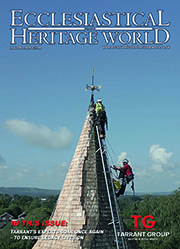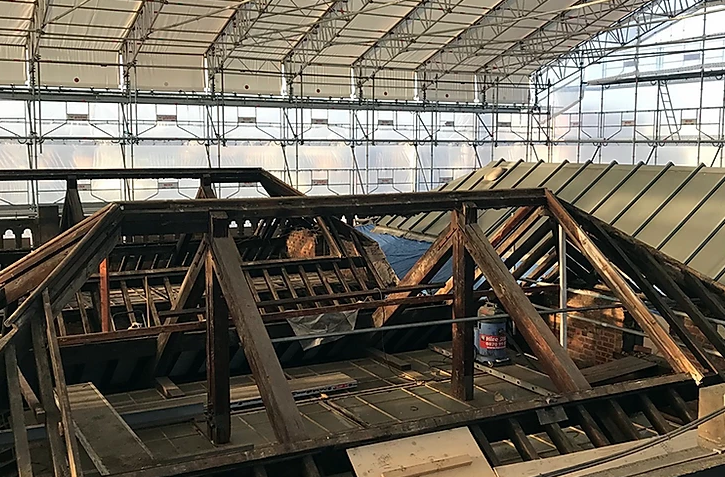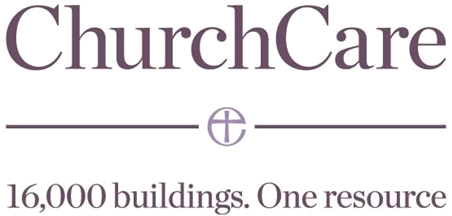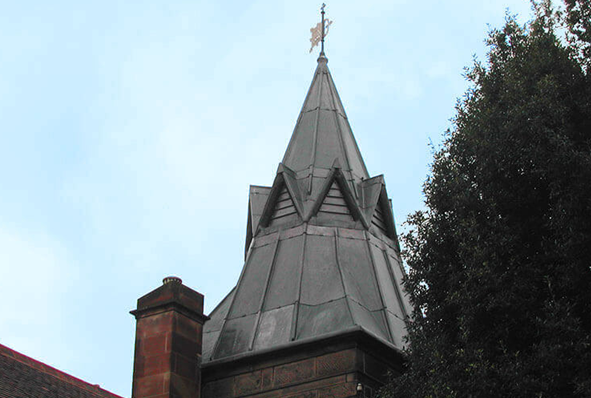Heritage Roofing
Heritage roofing - maintaining our iconic buildings
The UK is home to some of the most iconic buildings in the world, from stunning churches and cathedrals to historic stately homes. Each and every one of these remarkable feats of architecture requires regular maintenance to ensure they remain in the very best condition, allowing them to be enjoyed for generations.
Lightning Protection
When lightning strikes are you protected against this act of God?
The issue of lightning protection in churches is one that has exercised this publication for many years. In this four-part series of spotlights on the issue we will be revisiting various aspects of the subject, beginning with an overview of current thinking.
Traditional Lime
Lime: it’s better for buildings – and for the environment
It is now fairly well known that cement is not good for old buildings and that lime mortar should be used. But why? What are the advantages and what are the disadvantages? In order to begin to answer those questions it is necessary to understand the nature of traditional building, the process by which buildings used to be built, and how it differs from modern construction, the process by which we build today.
Audio Visual
Audio visual equipment in church buildings
This guidance is issued by the Church Buildings Council under section 55(1)(d) of the Dioceses, Mission and Pastoral Measure 2007. As it is statutory guidance, it must be considered with great care. The standards of good practice set out in the guidance should not be departed from unless the departure is justified by reasons that are spelled out clearly, logically and convincingly.
Read More...
CRE Events
Churches are coming under starter’s orders for CRE 25
Churches across the nation are beginning to make preparations for their visit to Christian Resources Exhibition’s CRE 25.
Insurance
You need to ensure that reasonable precautions are in place at your church to keep it safe for those who use it. To do this, you need to think about what might cause harm to people.
You will then need to decide if the precautions already in place are adequate. If they are not, you may need to identify further action to prevent any danger. When done formally, this is known as a risk assessment.
LPOW Grants
£23 million government package to support restoration of thousands of listed places of worship
Heritage Minister Sir Chris Bryant has announced that the Listed Places of Worship Grant Scheme will be extended into the next financial year, providing £23 million so that thousands of historical buildings, including churches, synagogues, mosques and temples, can carry out restoration work.
Lead Roofing
Lead is one of the oldest materials in the roofing industry and is still commonly used throughout the world today.
Lead roofing is a traditional roofing method which has been used in the industry for hundreds of years, and is therefore proven to be extremely reliable. Lead roofing, and sand-cast lead, in particular is ideal for old buildings such as churches or historical renovations, whereas milled lead roofing is a mass-produced alternative, used for precision and accuracy in homes and commercial buildings alike.
Home
KAD - Asbestos Specialists for Historical Objects
Most people are aware of the risks associated with asbestos from building fabric materials in museums, but have you ever considered asbestos being present in the display showcases or historical objects?
KAD have spent 5 years dedicating our specifically designed asbestos services to protect the liability of museums, by reducing the risks of exposure to asbestos and preventing the spread of asbestos in museums.
KAD have handled, inspected and identified a huge number of asbestos risks in historical objects both in storage and on public display We’ve inspected practically all forms of collections from aircraft to light bulbs and found asbestos in approx 80% of the collections we’ve inspected!
Practically all Asbestos Containing Objects (ACOs) KAD have identified present a significant risk to collections care specialists, and in many cases the general public. The main reason for this is simple – lack of accurate information and knowledge on asbestos in the collections.
To explain the difference between building fabric, Asbestos Containing Materials (ACMs) and Asbestos Containing Objects (ACOs) :-
• Approximately 3,000 Asbestos Containing Materials (ACMs) have
• been used as building fabric materials
• There are over 5,000 ACMs used in historical objects
• Buildings have used asbestos for over 100 years
• Historical objects have used asbestos for over 5,000 years
• Building fabric ACMs are usually recorded and in good condition
• Historical object ACMs are usually un-identified and in poor
• condition.
• Building contractors are asbestos awareness trained
• Very few collections care staff are asbestos awareness trained
• Building fabric materials are only usually disturbed during
• maintenance, repair or refurbishment
• Historical objects are handled, cleaned and regenerated on a daily
• basis
So why are the HSE now looking for museum organisations and heritage sites to manage Asbestos Containing Objects (ACOs)? Because the risks of exposure to asbestos in the collections is far greater than the risks of asbestos in the building fabric.
From years of training, inspecting and assisting UK National Museum Organisations in managing asbestos in collections effectively and efficiently, we have developed museum specific policies and procedures for asbestos management. If suitable management procedures are not in place there is a substantial risk that in the future collections care staff who are exposed to asbestos may seek legal compensation from you the employer, to which insurance usually will not cover.
So how can you reduce your exposure risks and limit your organisation’s liability? KAD have worked closely with the HSE for 5 years ensuring our specifically designed asbestos management procedures not only meet the current regulations, but excel them.
KAD are currently working with many National Museum Organisations throughout England & Scotland to minimise and reduce their liable risks and results have been instant. KAD have designed a historical objectsspecific risk assessment that applies to any object, anywhere in the world, and completed by the collection care staff within 10 seconds! KAD specialise in inspecting historical objects in order to locate and assess any asbestos that may be present. The information is recorded and presented in a survey report with colour photos, floor plans and an asbestos register to complete your legal requirements. If any asbestos is detected KAD work closely with the client to ensure any treatment is conducted safely, correctly and effectively to protect the objects and the client interests. KAD can make all necessary arrangements to treat any ACMs that are identified, design a remediation project, project manage the entire process, update all documents and issue certificates to ensure legal compliance.
KAD Environmental Consultancy are the only one-stop-shop asbestos professionals specialising in historical objects and are members of the Museums Association. So remember, before conducting any refurbishment of galleries all building fabric, showcases AND historical objects need to be professionally inspected for asbestos.




















